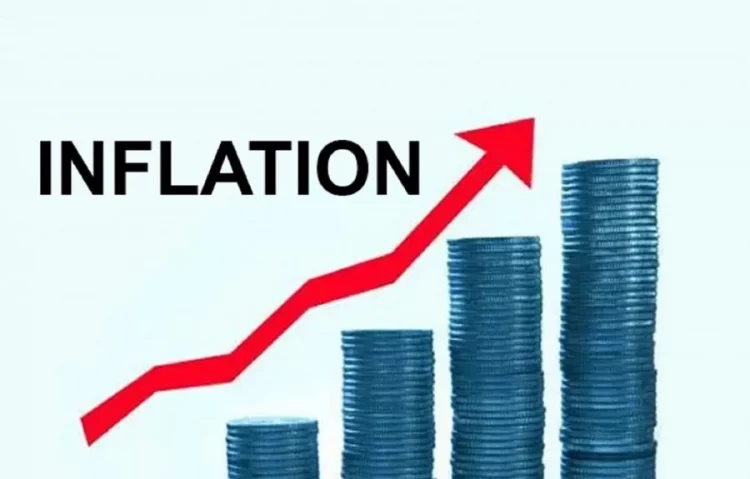Nigeria’s headline inflation rate eased to 22.22 per cent, a second time at a stretch, despite the increase in food inflation, signaling persistent high food prices in the country.
According to the National Bureau of Statistics (NBS), the latest figure is lower when compared to May 2025 headline inflation rate of 22.97 per cent..
On a month-on-month basis, the food inflation rate was up by 1.07 per cent in June 2025 to 3.25 per cent, compared to May 2025 (2.19 per cent).
This increase was driven by price hikes in essential items such as dried green peas, fresh pepper, white dried shrimps, crayfish, and meat. These rising costs dampened the relief suggested by the annual decline and continue to strain household budgets across Nigeria
Nigeria’s food inflation remains a critical economic concern. The year-on-year food inflation rate eased to 21.97 per cent in June 2025, continuing a downward trend from the exceptionally high 40.87 per cent recorded in June 2024.
This significant drop was largely attributed to the rebasing of the Consumer Price Index (CPI) base year to 2024, which affects direct year-on-year comparisons.
The average annual food inflation for the 12 months ending June 2025 was 28.28 per cent, still elevated despite being 7.06 percentage points lower than the previous year’s 35.35 per cent.
This suggests that food prices remain stubbornly high, even as headline inflation shows signs of cooling.
Analysts believe the drop in inflation signals a hold or reduction in the nation’s benchmark interest rate when the Central Bank of Nigeria’s Monetary Policy Committee (MPC) meets next week.
Some industry experts had projected a possible rate cut owing to a moderation in commodity prices across major sectors, including petroleum and farm produce, as Nigeria gradually enters the mid-year harvest season.
Nigeria’s Central Bank held benchmark interest rates constant at its meeting in May 2025 at 27.50 per cent to give room for a better understanding of the near-term developments in the economy.
The June figures showed that the food inflation rate in June 2025 also dropped to 21.97 per cent on a year-on-year basis. This was 18.90 percentage points lower compared to the rate recorded in June 2024 (40.87 per cent).
“The significant decline in the annual food inflation figure is technically due to the change in the base year,” the statistics bureau stated in the data released on Wednesday.
The average annual rate of food inflation for the 12 months ending June 2025 over the previous 12-month average was 28.28 per cent, which was 7.06 per cent points lower compared with the average annual rate of change recorded in June 2024 (35.35%).
Nigeria’s annual inflation rate eased for the second month to 22.97 per cent in May 2025, from 23.71 per cent in the prior month.
Looking at the movement, the June 2025 headline inflation rate showed a decrease of 0.76 per cent compared to the May 2025 headline inflation rate.
On a year-on-year basis, the headline inflation rate was 11.97 per cent lower than the rate recorded in June 2024 (34.19%). This shows that the headline inflation rate (year-on-year basis) decreased in June 2025 compared to the same month in the preceding year (i.e., June 2024).
On a month-on-month basis, the headline inflation rate in June 2025 was 1.68 per cent, which was 0.15 per cent higher than the rate recorded in May 2025 (1.53%). This means that in June 2025, the rate of increase in the average price level was higher than the rate of increase in the average price level in May 2025.
The percentage change in the average Consumer Price Index (CPI) for the 12 months ending June 2025 over the average for the previous 12-month period was 26.58 per cent, showing a 3.42 per cent decrease compared to 30.00 per cent recorded in June 2024.
On a year-on-year basis, in June 2025, the urban inflation rate was 22.72 per cent, 13.83 per cent points lower compared to the 36.55 perf cent recorded in June 2024. On a month-on-month basis, the urban inflation rate was 2.11 per cent in June 2025, up by 0.71 per cent compared to May 2025 (1.40 %). The corresponding 12-month average for the Urban inflation rate was 28.16 per cent in June 2025.
That was 3.92 percent points lower compared to the 32.08 per cent reported in June 2024.
The rural inflation rate in June 2025 was 20.85 per cent on a year-on-year basis. This was 11.24 per cent points lower compared to the 32.09 percent recorded in June 2024.
On a month-on-month basis, the rural inflation rate in June 2025 was 0.63 percent, down by 1.2 per cent compared to May 2025 (1.83%). The corresponding 12-month average for the rural inflation rate in June 2025 was 24.65 per cent. That means a 3.5 per cent points lower compared to the 28.15 per cent recorded in June 2024.











